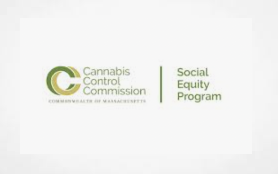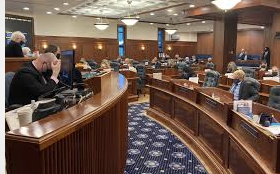Although it has mostly been debunked linguistically, the idea that the Chinese word for “crisis” is composed of two characters meaning “danger” and “opportunity” remains a powerful and popular meme. It is an apt reference to the hemp industry’s current predicament.
The USDA issued its interim final rule (Rule) on October 29, 2019. The Rule has been both eagerly and anxiously anticipated by anyone who interacts with the hemp industry. For the past six months there has been widespread speculation regarding the Rule’s likely provisions. Remarkably, the USDA operated a leak-proof rule drafting operation rivaled only by the Mueller investigation. Upon learning in September that the Rule had been delivered to the White House for final approval I submitted a Freedom of Information Act request to see if I could acquire a copy. I never received a response.
At 161 pages, the Rule is long. In addition to discussions about a large number of issues, it is riddled with necessary but mind-numbing discussions on administrative matters and budgets. Once the Rule was issued my office took an “all hands on deck” approach. We read, analyzed, summarized, and published several articles about it. You can read them here, here, and here.
I decided to take a more philosophical approach in this article and ask whether the Rule will initiate a crisis or create novel opportunities in the hemp industry. To a large degree, the answer to this question hinges on how the industry responds to two of the Rule’s key provisions regarding analytical laboratories (Labs) and total THC.
The first crisis point initiated by the Rule is its requirement that Labs “must be registered by the DEA to conduct chemical analysis of controlled substances (in accordance with 21 CFR 1301.13).” The USDA’s basis for implementing this requirement is that Labs “could potentially handle cannabis that tests above the 0.3% concentration of THC on a dry weight basis, which is, by definition, marijuana and a Schedule 1 controlled substance.” In other words, implied in the requirement for testing cannabis samples for their THC concentrations is the fact that some will not test within the legal limit for hemp and will thus be illegal marijuana. Since it is illegal to possess marijuana without a DEA registration, all Labs must be registered with the DEA in order to perform compliance testing for hemp.
On its face, this position makes perfect sense. If a Lab will be handling illegal material then it should be licensed to do so. However, this begs the question of how a Lab can get licensed. The USDA helpfully indicates that it will post directions for obtaining a DEA registration. But a quick review of DEA Form 225 (Application for Registration Under the Controlled Substances Act) presents an immediate hurdle. Section 4 states, “You MUST be currently authorized to prescribe, distribute, dispense, conduct research, or otherwise handle the controlled substances in the schedules for which you are applying under the laws of the state or jurisdiction in which you are operating or propose to operate.” Marijuana is illegal in almost half of the states. Will that disqualify Labs in those states? Even if we assume a workaround on this point, the DEA is infamous for its unyielding animosity towards marijuana. Are we to assume that it will go easy on the new Labs signing up to do analytical testing? And, even if we assume an about-face by the DEA on the issue of marijuana in this context, does the agency have sufficient resources to vet the large number of applications that it will receive during the next several months?
The fact is that analytical testing for hemp is currently a critical failure point in the hemp industry. There are simply not enough Labs to conduct analytical testing at the rate that hemp is being produced. The new requirement that all Labs must be registered with the DEA to handle marijuana has the potential to lock down the entire supply chain. This is not to say that Labs should not hold proper certifications. But, unless the USDA is willing to coordinate with the DEA to fast-track applications or ditch this provision altogether in favor of issuing an exemption for handling and disposing of non-compliant hemp, this requirement threatens to place the industry into an immediate crisis scenario. Of course, for Labs that already hold DEA registrations, this is an enormous opportunity to ramp up their business, provided that they have the ability to do so.
The second crisis point initiated by the Rule is its requirement that, “Testing will be conducted using post-decarboxylation or other similarly reliable methods where the total THC concentration level measured includes the potential to convert delta-9- tetrahydrocannabinolic acid (THCA) into THC.” This is a technical way of saying that the Rule requires the total THC value of a hemp crop not to exceed 0.3%. In other words, the concentrations of THCA in hemp now matter. I am particularly interested in the total THC issue and have previously written about it in detail. If you are not familiar with the issue I encourage you to click here to be directed to an article in which I analyze and debunk the arguments for using total THC as the metric for determining whether a cannabis sample is lawful hemp or illegal marijuana. Although I am not surprised, I am disappointed and concerned that the USDA chose to implement the total THC metric. For the reasons I discuss in the article I just referenced, the 2018 Farm Bill did not require the USDA to implement a total THC testing protocol.
Additionally, using the total THC protocol will have disastrous consequences for the hemp industry. Primarily, the Rule will dramatically reduce the varieties of hemp that can be cultivated. This is because it is difficult to find hemp genetics that reliably test within the 0.3% THC limit when using a total THC protocol. Much, if not most, of the hemp currently being cultivated will not pass a total THC test. Farmers are already nervous about growing a “hot” crop. Under the new rules, growing a crop that exceeds 0.5% total THC could result in severe sanctions, even if the actual delta-9 THC concentrations are substantially below 0.3%. This also has the potential to stymie innovation since there is little “wiggle room” to conduct research and development. As with the situation discussed above, producers of genetics with reliably low total THC values will profit from this opportunity since their competitors’ strains will no longer be legally viable.
Every crisis presents opportunities. In this case, the USDA rule presents significant opportunities for the few Labs that hold DEA registrations and the genetics producers that have cultivars with reliably low total THC concentrations. However, these provisions have the potential to provoke a general crisis in the industry at large as the majority of participants struggle to find solutions. Although I tend to be an optimist, I am concerned about how these two provisions will impact the industry.
October 30, 2019
Rod Kight is an attorney who represents lawful cannabis businesses. He speaks at cannabis conferences across the country, drafts and presents cannabis legislation to foreign governments, is regularly quoted on cannabis matters in the media, and maintains the Kight on Cannabis legal blog, where he discusses legal issues affecting the cannabis industry. You can contact him here.

















